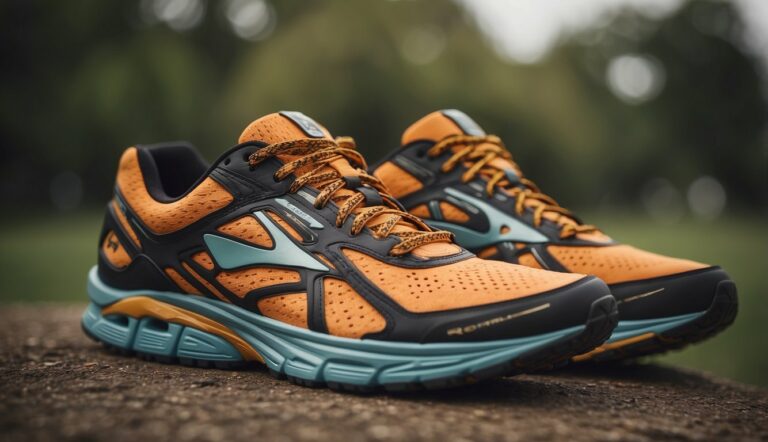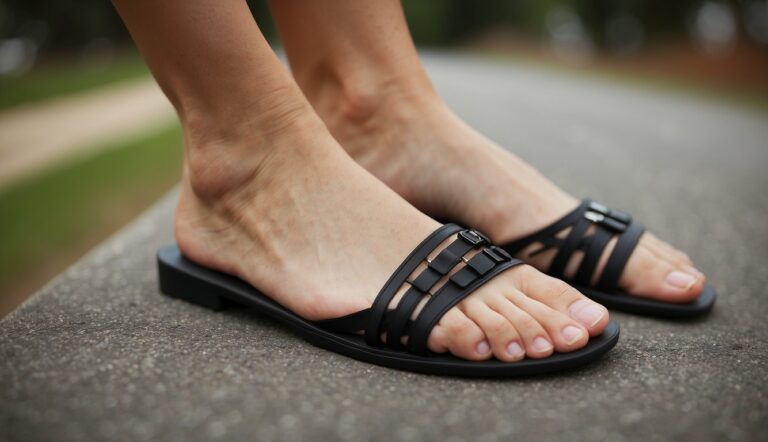How Toe Spacers Can Alleviate Morton’s Neuroma Symptoms: Exploring the Benefits
Morton’s neuroma is a painful condition that affects the ball of the foot, typically between the third and fourth toes. As someone well-acquainted with foot care, I’ve seen many cases where individuals suffer from sharp, burning pain in this area, often described as standing on a pebble. This discomfort arises from the thickening of tissue around one of the nerves leading to your toes, which can cause significant agony during daily activities.
I have found that one effective way to mitigate some of this discomfort is through the use of toe spacers. These simple devices work by gently spreading the toes apart, which may help to reduce the pressure on the nerve. Additionally, toe spacers aim to realign the toes into their natural position, which can help support the foot’s architecture and lead to better overall foot health.
The main benefits of toe spacers for those dealing with Morton’s neuroma include pressure relief, improved toe alignment, and enhanced balance within the foot’s structure. By easing the compression on nerves and promoting a more natural toe spread, many individuals experience relief from foot pain. However, it’s important to note that while toe spacers provide potential benefits, they should be used as part of a broader treatment strategy and not as a sole solution. For those struggling with Morton’s neuroma, consulting a foot care professional is essential before starting any new treatment.
How Toe Spacers Can Alleviate Morton’s Neuroma
Toe spacers can be particularly beneficial for individuals suffering from Morton’s Neuroma, a painful condition that affects the nerves between the toes. They work by addressing some of the root causes and symptoms of this condition.
Here’s how toe spacers can alleviate Morton’s Neuroma:
- Reduce pressure on nerves: Toe spacers can help by decreasing the pressure on the affected nerves, which is often a significant contributor to the pain associated with Morton’s Neuroma.
- Promote proper toe alignment: By aligning the toes to their natural position, toe spacers can prevent squeezing and compression of the already irritated nerve.
- Encourage wider footwear: The use of toe spacers can make individuals more conscious of the need for naturally shaped footwear that is flat, widest at the ends of the toes, and flexible, thereby preventing further irritation.
- Provide arch support: Some toe spacers are designed to also provide support for the foot’s natural arch, which can help redistribute weight away from the painful area.
- Improve foot mechanics: Better toe alignment and reduced pressure can improve overall foot mechanics, potentially reducing the aggravation of the neuroma during walking or running.
What Is Morton’s Neuroma?
Morton’s neuroma is a common foot condition characterized by pain and discomfort in the ball of the foot, especially between the third and fourth toes. It involves the thickening of the tissue surrounding the nerves leading to the toes.
Symptoms and Diagnosis
Symptoms of Morton’s neuroma typically include:
- Pain: A sharp, burning, or shooting pain in the ball of the foot that may radiate to the toes.
- Tingling and Numbness: A feeling akin to walking on a pebble or fold in a sock.
- Swelling between the toes.
Diagnosis usually involves a:
- Physical Exam: Pressure applied on different parts of the foot to pinpoint pain and identify the precise location of the neuroma.
- Imaging Tests: While MRI and X-ray can help rule out other conditions, they are not typically used to diagnose Morton’s neuroma.
Underlying Causes
The precise causes of Morton’s neuroma are not always clear, but they may include:
- Compression and Irritation of the nerve due to tight shoes.
- Repetitive Trauma: Activities that involve significant pressure on the ball of the foot.
- Foot Deformities: Such as flatfeet, bunions, and hammertoes that can lead to extra stress on the nerves.
The Role of Toe Spacers
Toe spacers are designed to relieve pressure on the nerves in the ball of your foot, potentially providing relief and support for conditions like Morton’s neuroma. When incorporated into your footwear routine, they can be a simple yet effective tool.
Mechanism of Action
Toe spacers work by gently separating the toes, which reduces pressure on the nerves that can lead to pain and discomfort associated with Morton’s neuroma. By spreading the toes, they create more space which can decrease the compression on the interdigital nerves in the ball of the foot.
- Reduction in pressure: Toe spacers can redistribute the weight over a larger surface area, lessening the impact on any single point in the ball of the foot.
- Support: The additional space allows the foot to spread naturally, which can help with balance and the overall alignment of the foot.
Application and Usage
For someone dealing with discomfort in their shoes due to Morton’s neuroma, finding relief is crucial. I’ve found that using toe spacers is straightforward:
- Select the right size: Ensure the toe spacers fit well, as an improper fit might not provide the desired relief.
- Insert into footwear: Place the toe spacers between your toes before putting on your shoes. They should feel comfortable and not overly tight.
- Frequency: Wear the toe spacers regularly, especially in shoes that tend to squeeze the toes together, to maintain consistent relief.
- Duration: Start with short periods and gradually increase the time spent wearing them to allow your feet to adjust.
Conventional and Complementary Treatments

As someone experienced in using toe spacers for Morton’s neuroma relief, I understand that effective therapy often involves a mix of conventional treatments and complementary strategies.
Medication and Therapies
Morton’s neuroma can cause significant discomfort, but the good news is there are non-invasive ways to manage it. Medications such as ibuprofen and naproxen help reduce inflammation and pain. Alongside these, therapy options including padding and shoe inserts are commonly recommended to alleviate pressure on the nerve. In more persistent cases, corticosteroid injections may be used to provide temporary relief from the pain associated with the condition.
Surgical Interventions
For individuals where conservative treatments have not been effective, surgical options may be considered. The main surgical procedure is known as neurectomy, which involves the removal of the affected nerve. Surgery is generally seen as a last resort after the exploration of other treatment options. My advice is to consult with a healthcare provider to understand the implications and potential outcomes of surgical interventions.
Lifestyle and Home Management

Managing Morton’s Neuroma involves changes in both footwear and daily activities. These adjustments are vital for creating an environment that reduces foot stress and allows the irritated nerves to heal.
Footwear Modifications
I find that wearing properly fitting shoes with a wide toe box significantly eases the pressure on the nerves in your feet. Here’s what to look for in footwear:
- Wide Toe Box: Ample space reduces compression on your toes.
- Arch Support: Provides balanced foot positioning and reduces pressure on the forefoot.
- Low Heels: High heels can exacerbate discomfort, so opt for flatter shoes.
- Using Metatarsal Pads: These fit inside shoes and shift pressure away from the nerve.
- Toe Spacers: Can provide relief by realigning the toes and reducing pressure on the neuroma.
| Feature | Benefit |
|---|---|
| Wide Toe Box | Reduces toe squeeze |
| Arch Support | Balances foot pressure |
| Low Heels | Alleviates forefoot stress |
| Metatarsal Pads | Shifts pressure from nerve |
| Toe Spacers | Realignment and reduced nerve pressure |
Exercise and Activity Adjustments
Adjusting how you walk and run can be just as crucial as footwear modifications. Here are a few points:
- Restrict High-Impact Activities: Activities like running might worsen the pain, so consider low-impact exercises such as biking or swimming.
- Ice After Exercise: Apply ice to the affected area to reduce inflammation.
- Rest: Give your feet a break if they start to hurt. Overuse can hinder recovery.
- Gradual Increase in Activity: When returning to exercise, gradually increase the duration and intensity to avoid aggravating the foot.
| Adjustment | Purpose |
|---|---|
| Limit High-Impact | Prevents exacerbation |
| Ice | Reduces inflammation |
| Rest | Aids in recovery |
| Gradual Activity | Prevents irritation |
When to Seek Professional Help
While toe spacers can be beneficial in managing symptoms of Morton’s neuroma, there are times when professional medical advice is crucial. If self-care measures don’t alleviate the pain, or if symptoms worsen, seeking help from a healthcare professional is advised.
Consulting a Specialist
If your discomfort persists despite using toe spacers, it’s time to consult a specialist. This could be a podiatrist, a doctor specializing in foot conditions, or perhaps an orthopedic surgeon who deals with musculoskeletal issues. They can provide a comprehensive evaluation and confirm whether your symptoms are indeed caused by Morton’s neuroma.
- Medical History: Be prepared to discuss your medical history, as this can influence your treatment options.
- Second Opinion: Don’t hesitate to seek a second opinion if you’re uncertain about the diagnosis or suggested treatments.
Preparing for Your Appointment
When you’ve decided to see a doctor, proper preparation can help make the most of your appointment.
Checklist for Your Appointment:
| To Bring | Details |
|---|---|
| Medical Records | Include any relevant past diagnoses or treatments. |
| List of Symptoms | Be specific about where and when you experience pain or discomfort. |
| History of Footwear | Notes on shoe types you frequently wear and whether they have narrow toe boxes and high heels, as these can aggravate Morton’s neuroma. |
| Questions | List down any questions you have for the doctor to ensure you don’t forget them during the visit. |
Remember, while toe spacers can offer relief, they’re not a substitute for professional medical advice when it’s needed.





